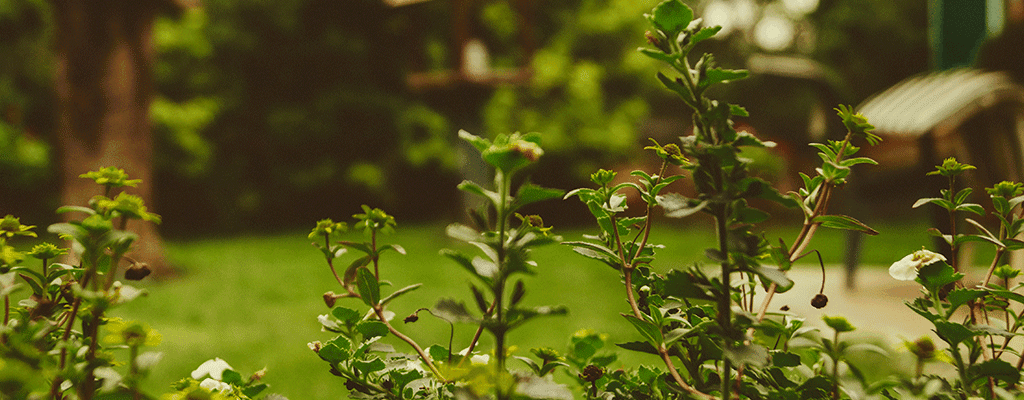
Spring is upon us, which means the weather is much more inviting and offers a lot more color to our outdoor areas. It also means that there are some special considerations when you are taking care of your lawn. Temperatures fluctuate, rain is more likely, and storms start brewing that can bring along wicked winds and hail. Check out our 7 spring lawn care tips to easily manage your lawn and garden during this fresh, new season.
Tips to keep your lawn looking fresh this spring:
Know your grass
Cool-season grass
Cool-season turfgrasses are a type of grass that survives in ideal temperatures between 60 and 75°F. They have two growth spurts during the year – one in the spring and one in the fall. This grass can struggle during the summer, so spring maintenance is crucial.
Cool-season grasses:
- Kentucky bluegrass
- Rough bluegrass
- Bentgrass
- Perennial ryegrass
- Fine fescue
- Tall fescue
Warm-season grass
Warm-season grasses love the heat and are dormant during winter months. Their optimal temperatures are between 80 and 95°F. After the spring frost, they begin growing more and take off by the middle of summer. Note which type of grass you have, so you can better care for it, and focus on that maintenance when it’s most needed.
Warm-season grasses:
- Bermuda grass
- Augustine
- Centipede grass
- Zoysia grass
Clean up your yard
Rake up and remove any dead leaves, petals, and other debris from your garden and lawn. Pull out the weeds, and be sure you get the roots, so they don’t grow back. Not only will you be able to see what you’re working with better, but it also clears the way for new plants and flowers. You’ll also need to prune the plants that survived the winter so they can start growing again in the spring. If your flowers are blooming, prune them right away to allow for healthy growth.
Weed killers
Pesky weeds need to be stopped before they start. They thrive during the summer, which means you want to prevent them from sprouting in the spring. Pre-emergent herbicides work well, but if you’re going to go natural and chemical-free, cornmeal will do the trick.
Watering
You’ll know your lawn is struggling and not getting enough water when they hit their “stress point.” For Bermuda and Zoysia grasses, if your footprint does not bounce back, it’s time to up your watering regiment. St. Augustine grass will begin to fold when it’s thirsty. A simple rule of thumb during spring is to keep your lawn hydrated, but not flooded. If you set your sprinklers for 30 minutes, and you see stress points, increase the time. If you are watering for an hour a day, and the grass is moist by the next day, you’re giving it too much. Water in the morning so that the leaves will dry quickly with the sunlight and be less prone to disease.
Overseeding
Those bare patches might not look very pretty, but it might be worth your time to skip seeding in the spring if you have cool-season grass in your yard. Fall is the ideal time to overseed the cool-season grasses so that the new grass is not competing to grow with crabgrass. However, if you have warm-season grass, late spring is the best option for you!
Mulch
You may want to consider adding mulch, in addition to the fertilizers you put in your garden. Using 1-3 inches of mulch will help prevent annoying weeds and keep diseases at bay. This amount of mulch will also aid in keeping the moisture locked in. The best tip when adding mulch to your garden – place it a few inches from the plant stems; otherwise, the roots could behind to rot.
Plant
After cleanup and moisturizing, you’re ready to add new plants! Pansies, green vegetables, lilacs, tulips, snapdragons, and redbuds are all great spring additions. If you have tomato plants inside, it’s a good time to move them outside. Plant perennials, as you will need to replace annuals each year. Perennials will live for up to 3 years, and some can even survive winter freezes.
